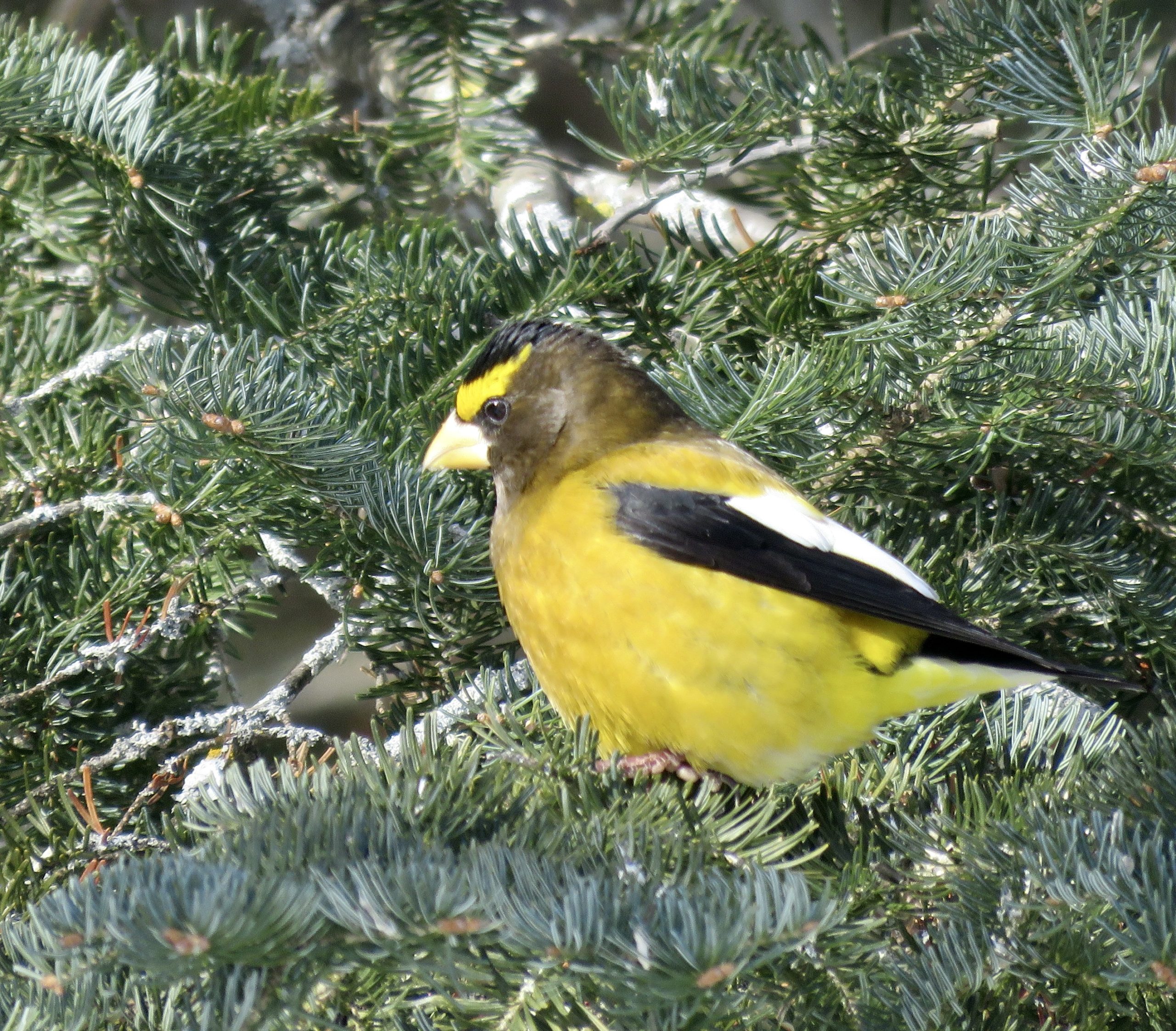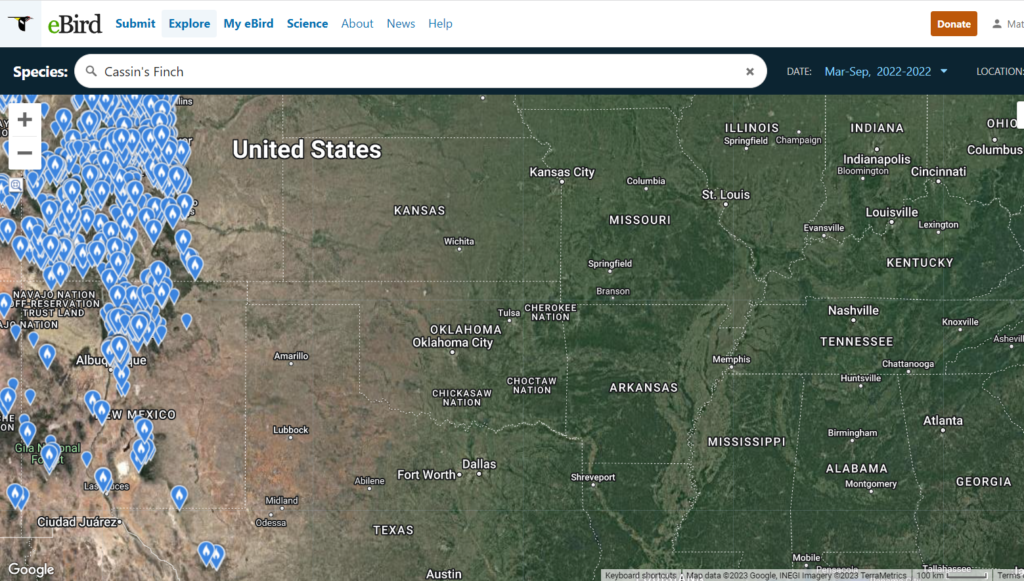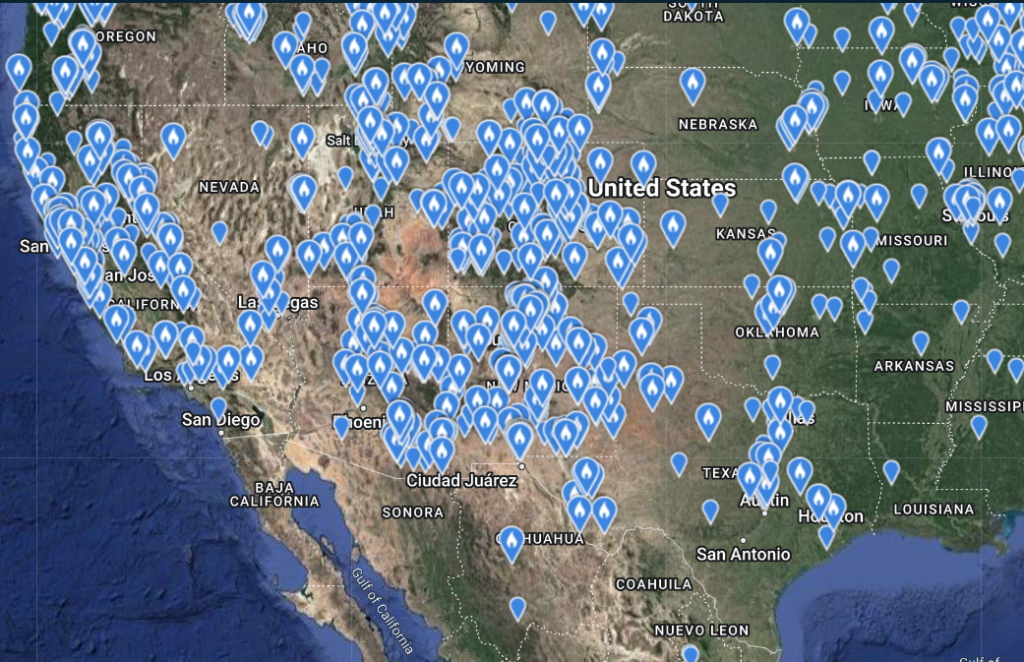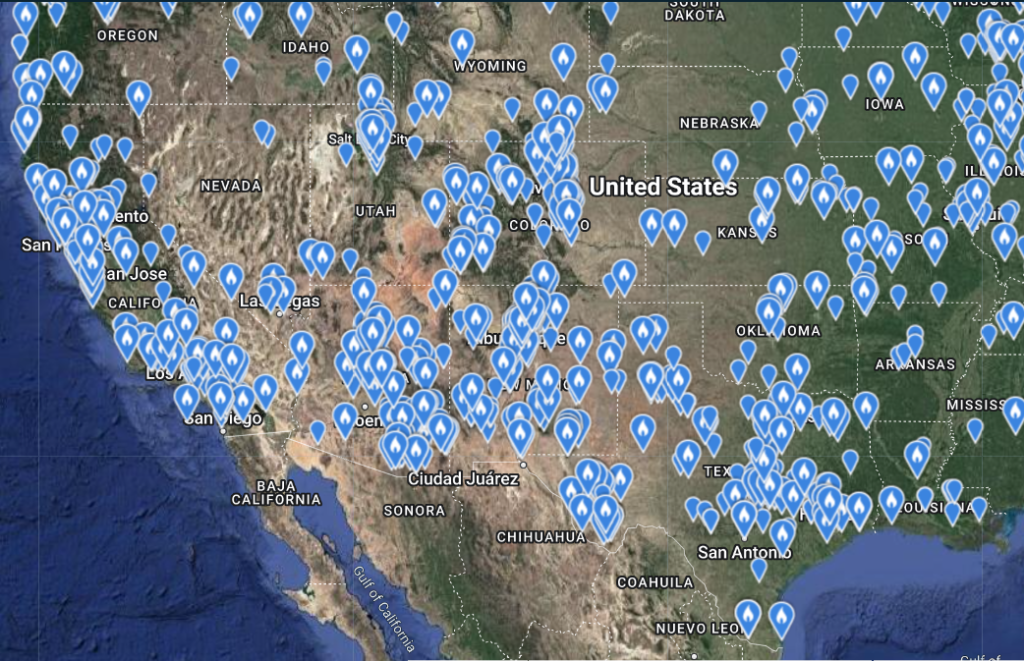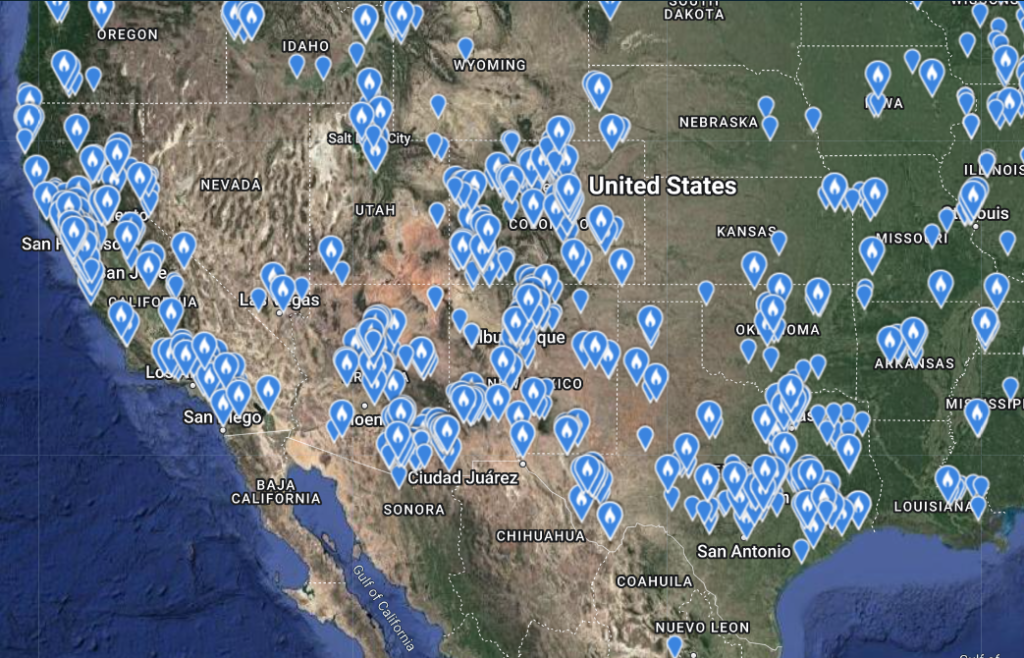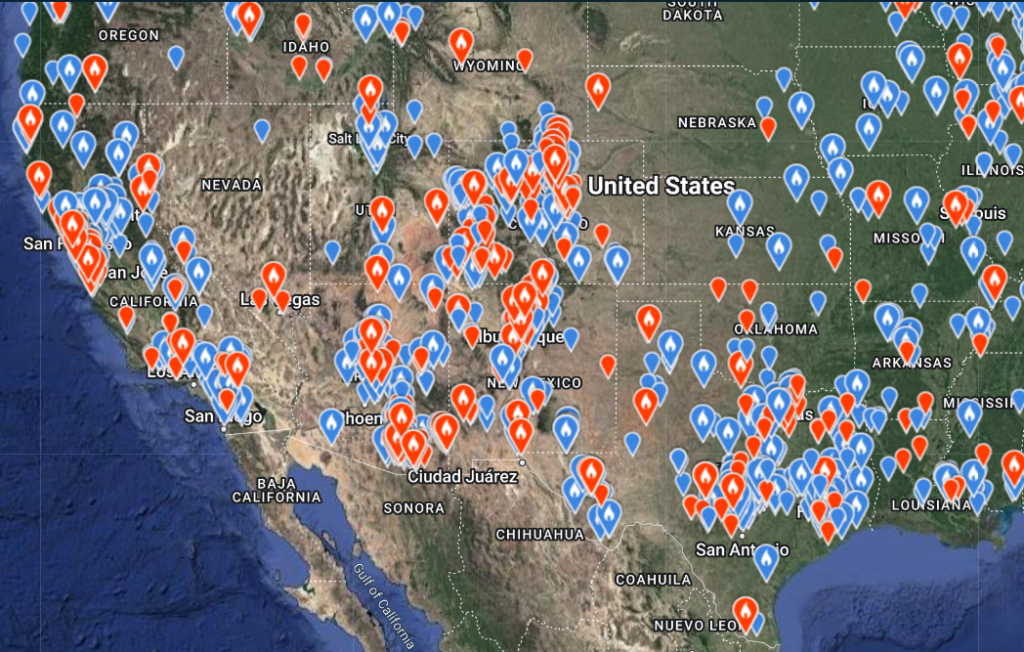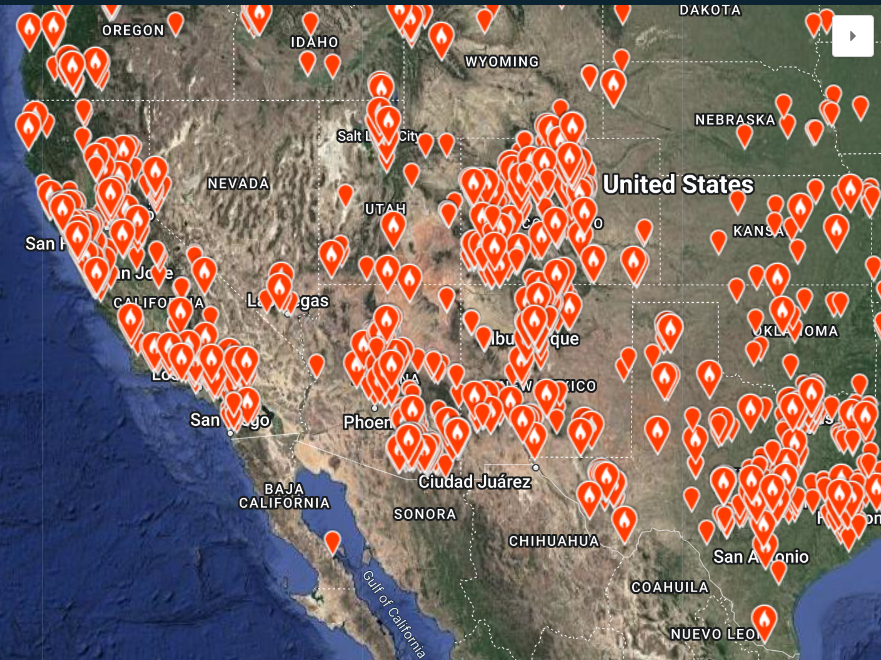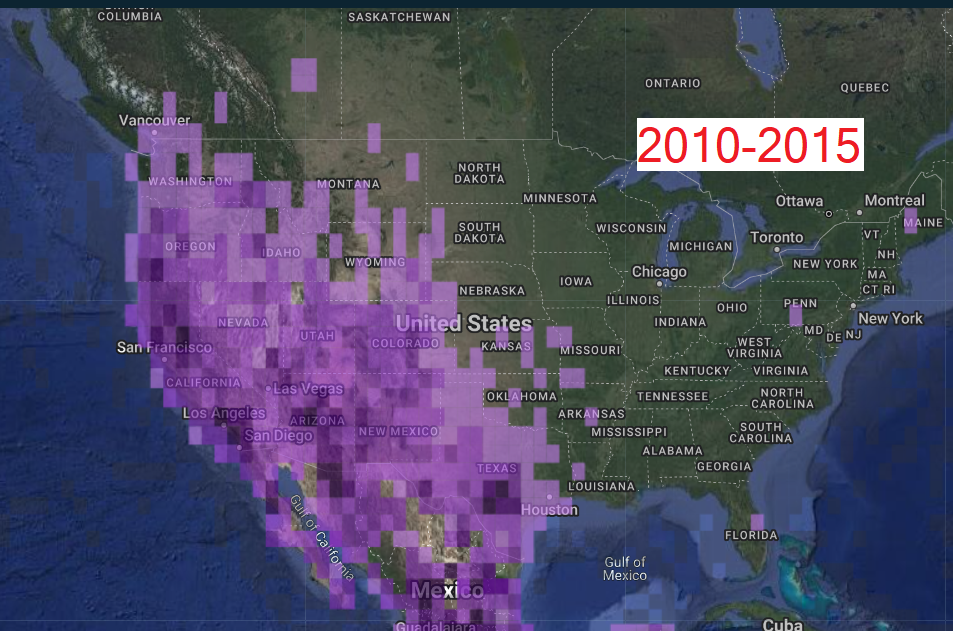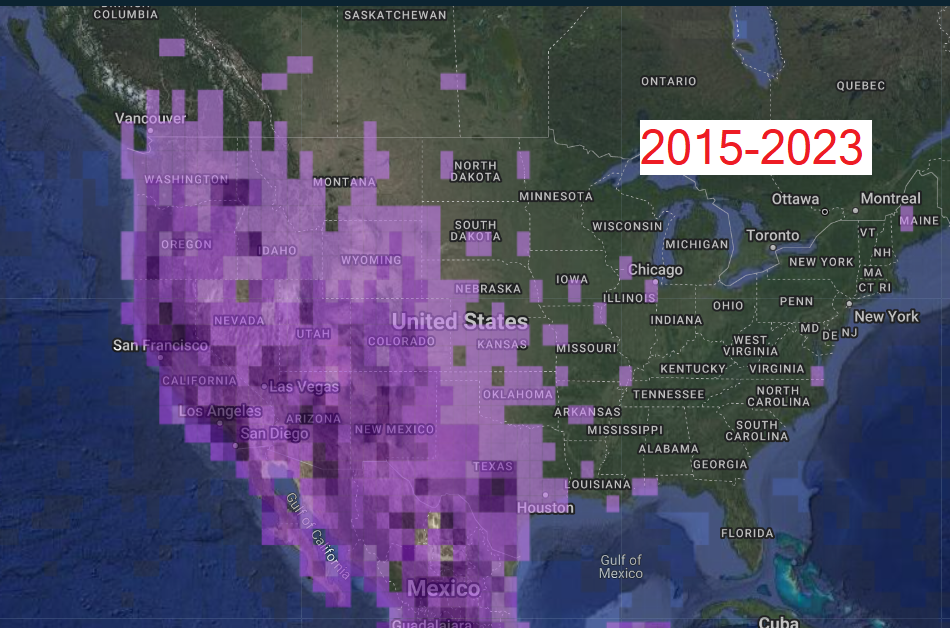2022-23 Irruptions and Movements – Western Perspectives
by Matthew J. Williams and Matthew A. Young
This season’s finch irruption in the Western US has been an interesting one. Food availability, a major contributing factor in these movements, has been affected by both the amount of seeds/cones/etc. produced and likely whether or not they were buried or otherwise made inaccessible by early (and continued!), deep snows in northern and alpine areas of the west. This effect is also frequently seen among the owls and Montana enjoyed a fairly cooperative Northern Hawk-Owl in early January that presumably fled even deeper snows that made hunting difficult.
Evening Grosbeak
Because this species is often considered “resident” in parts of the west, it’s a bit tougher to determine movements, however, the fact that there are various call types can give us clues…if you can get some audio recordings of their calls AND get them identified to type in eBird. Type 1 is the irruptive type across much of the west, but type 4 can move a little as well.
For example, in Utah, from August through November, I was seeing (and hearing) a small flock of Type 4’s. Since then, the only reports of Type 4’s have come from South and East of Utah, Colorado, into Eastern New Mexico. Reports from October and November in Texas were also showing this type.
On November 28th, I recorded a flock of Evening Grosbeaks where both Type 4 and the Northwestern Type 1 calls were present (exact ratio unknown). This was consistent with other observations showing that Type 1 also moved South and East through the fall with reports in Eastern Oregon and Western Montana as early as Mid-October.
Many casual feeder watchers may assume that the familiar chickadees (or finches) they consistently see at their feeders are the same individuals but that is almost universally not the case. The call types in Evening Grosbeaks (and Red Crossbills too) allow citizen scientists to participate in obtaining a better understanding of irruptive migrations and nearly everyone has a very capable recording tool in their pocket. Next time you see an Evening Grosbeak, feel free to snap a photo of this stunning species but, more importantly, get your phone’s audio recorder running and identify it to Type (you can even ask FiRN for help).
Additionally, the Evening Grosbeak has been designated as one of only four Road to Recovery Species, and a team of researchers are busy banding and tagging birds with satellite tags to help figure out what is going on given the 92% decline over the last 50 years.
Cassin’s Finch
Like the Evening Grosbeaks, Cassin’s Finches also moved with a trend towards the South and East. One example is from the map along the New Mexico/Kansas/Texas borders. The reports from March to September 2022 are strictly from the western part with sightings throughout the mountains north and south of Albuquerque. From October through January 2023, the sightings shift a bit, with some scattered reports east to Amarillo and Lubbock, Texas and Garden City, Kansas. There have also been some good numbers reported from Guadalupe Mountains National Park in west Texas with a flock of 30 observed in October. Will this mark the extent of their irruption this season or will the early spring bring more reports farther east?
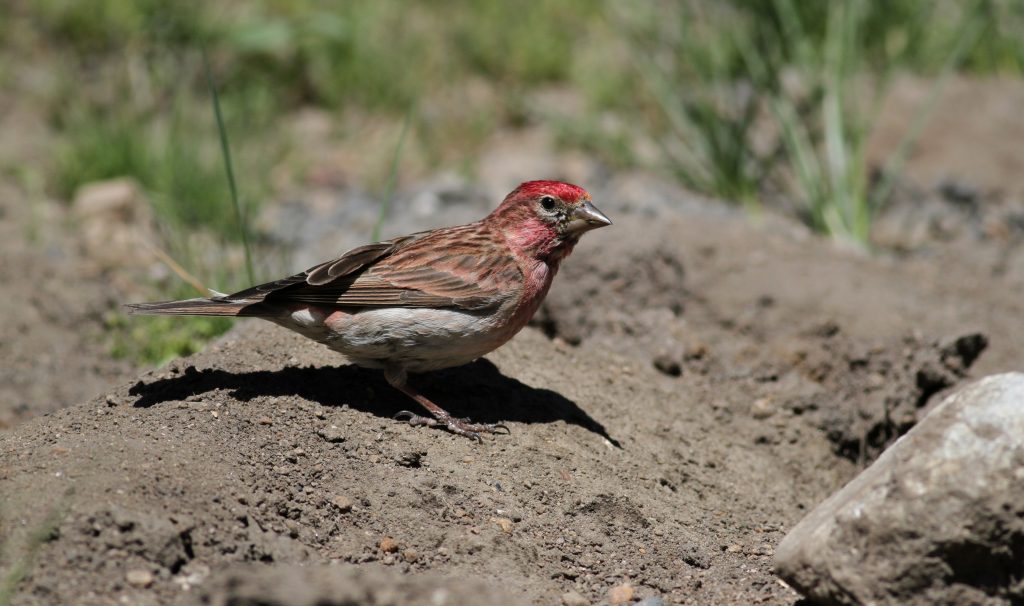
With this example, there are some challenges with the data. For example, are the Cassin’s absent in the mountains or are there fewer humans in the mountains reporting them? Also, without actually tracking birds, it’s not possible to know if the individuals that headed east came from nearby or from farther north and west in the Cassin’s typical range.
eBird Cassin’s Finch Map from March 2022-Sept 2022 and Oct 2022-Feb 2023.
Red Crossbill
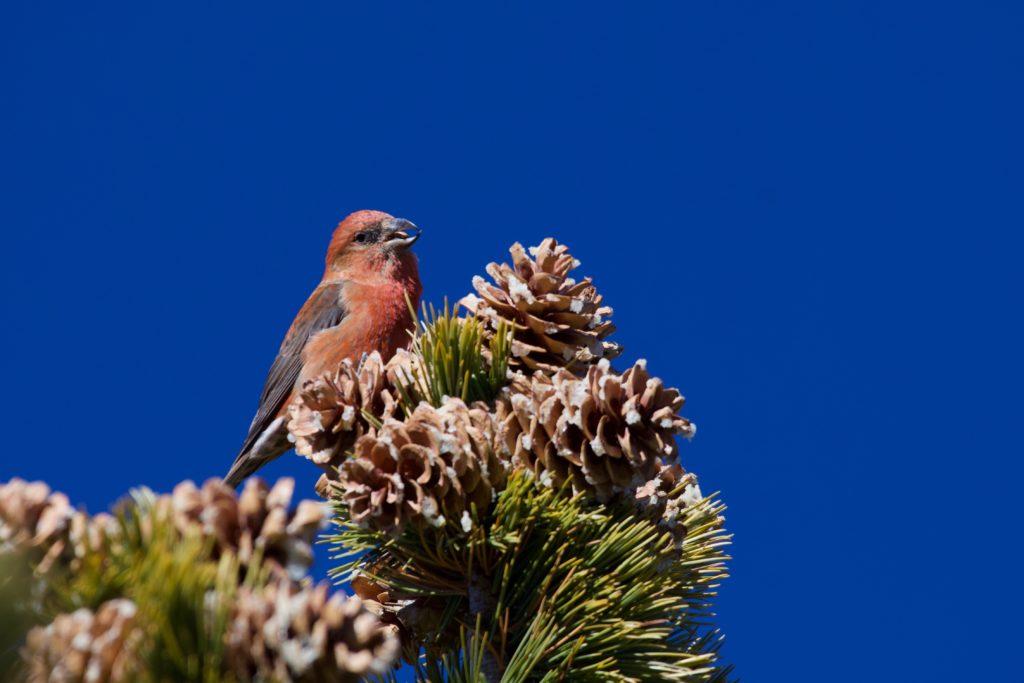
The trend continues with this species wandering South and East. Its movements seem to be a bit more scattered across some of the plains states even as early as mid-2022. There were reports from Garden City, Kansas in June and August and other reports in the Kansas City, Missouri area in September and Fort Smith Arkansas in August. This year seems to suggest that they may move together but more data will be needed to determine if Western Type 2 Red Crossbills and Cassin’s finch correlate years they irrupt?
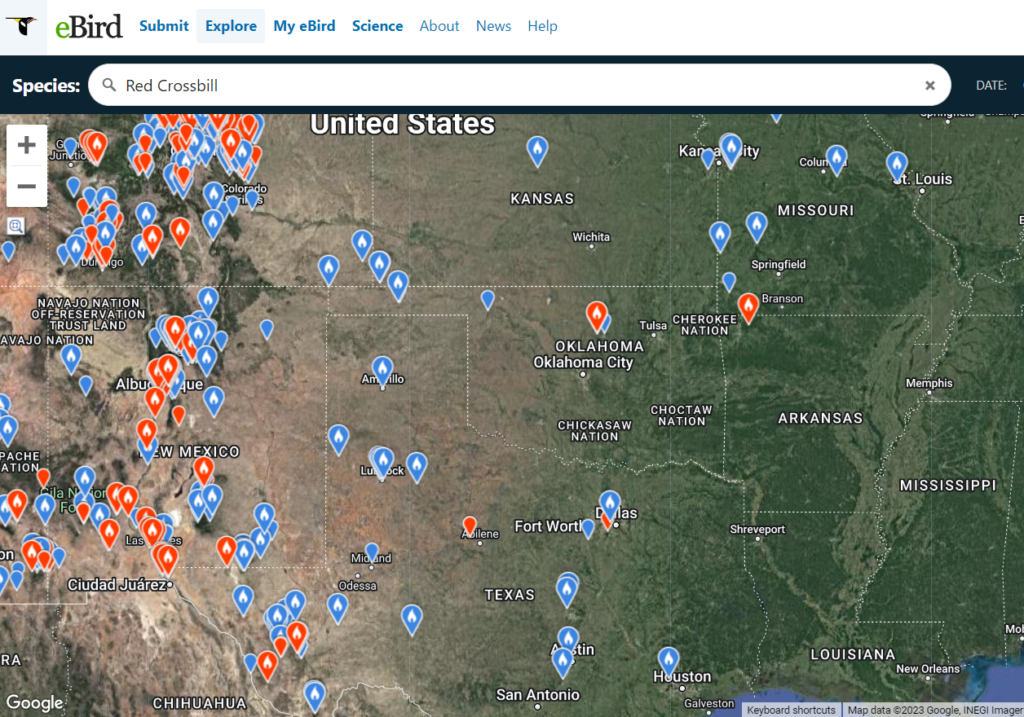
Cassia Crossbill
It first started during the summer of 2021 with Christian Nunes’s recording (then Nathan Pieplow went back and found a Cassia recording in Colorado from 2012), but this theoretically-sedentary “new” Idaho-endemic crossbill species is a case-in-point for making sure to document reports with recordings. After an apparent, nearly-overlooked first record in Colorado, birders started looking (and listening…and recording!). And they found some current (and historical) records! It seems possible that the species may have been around in the Centennial State for a decade or more. Sure, the South Hills fires during the late summer of 2020 likely contributed to the situation, but apparently it’s tough to stop a crossbill from wandering! A first winter record was even recorded in January 2023 (https://ebird.org/checklist/S126929683).
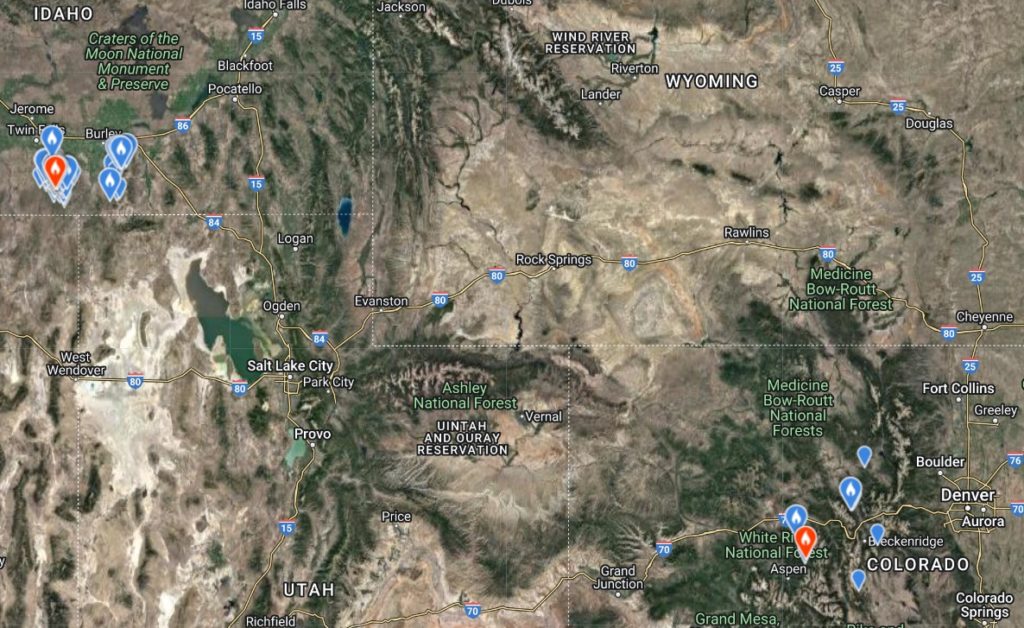
Pine Siskin
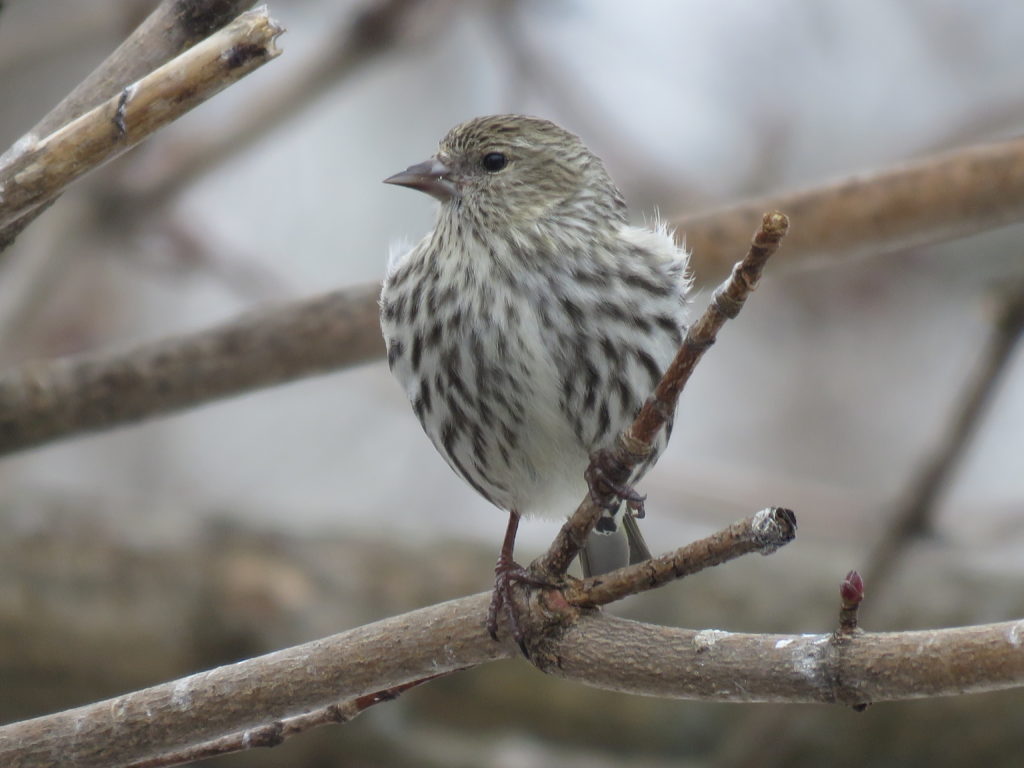
While not a huge flight year as seen recently, reports from ebird show a shift of reports to the south and east. It is interesting to watch the abundance change as the Pine Siskin sightings seem to drain out of the Rocky Mountain states and accumulate in Texas. While this isn’t a complete picture and represents sightings and not numbers of individuals, it is still generally indicative of the movements of this species from October 2022 to February 2023. Also, noteworthy, the total number of sightings increased in February, perhaps indicating that these birds have been driven in to feeders and other places where they are more frequently reported.
eBird Pine Siskin map from October 2022-February 2023
Rosy-Finches
Another set of species that aren’t often considered among the traditional boreal irruptors, these 3 unique but closely-related related finches have habits and wanderings that are poorly understood and are likely to be significantly impacted by climate change in ways we are just beginning to understand. (https://finchnetwork.org/help-us-understand-rosy-finches-before-they-are-gone)

This winter season seems a bit different than years past. Fewer observations overall suggest that some birds may be in places that aren’t traditionally well-birded. The deep snows in some regions may have covered more of the weeds and seeds that they feed on, forcing them to travel farther. One great example is a large (~500 individuals) mixed flock of all 3 species observed in natural desert habitat (not at feeders) on 14 January in Glade Park, CO https://ebird.org/checklist/S126153010 . This particular, remote region located west of Grand Junction, CO, has NO prior records of Rosy-Finches on eBird. Here is also an article with Zach Hutchinson at Flocking Around about the topic of where are the Rosy-Finches this winter.
One recent very surprising report from January 22 of 1, (and possibly 2!) Gray-Crowned Rosy-Finches in Nova Scotia https://ebird.org/checklist/S126738579
This peculiar report and the possibility that it was more than one bird also suggest that the wanderings are unique this year. It will be interesting to note what the Rosy-Finch Project https://finchnetwork.org/the-rosy-finch-project is able to determine by comparing several years of data. Sageland Collaborative is leading the way on the Rosy-Finch Project.
Common Redpoll
While not a notable year for redpolls in the west, they are not completely absent either. A few reports of 1-2 birds from December 2022 in Wyoming and Colorado coupled with a flock of 30 heard near Beaver Creek, CO on 1/10 https://ebird.org/checklist/S125888776 suggest that there may be some wandering flocks yet to be seen this winter.
White-winged Crossbill

As in years past, this one is tough to pin down at this point. There are only a few sightings throughout the west for this season (in Montana and Wyoming) and most of the montane areas containing spruces that this species enjoys are inaccessible until June. Stay tuned to see if there’s any more to report once things melt a bit in a few months. The vast majority of White-winged Crossbills and Pine Siskins seemed to have stayed in the once in twenty year spruce cone crop found in the western boreal forest of Canada.
Bohemian Waxwing

This has been an exciting season for Bohemian Waxwings! Though only an honorary finch, their irruptive and elusive habits make them a treat to find, especially when they show up in good numbers. This season’s wanderings mark what appears to be the most southern irruption in the west seen in a very long time. 2005 had birds dipping down into New Mexico and 4 were seen north of Houston, Texas that same year! One also showed up near Dallas in 2019. Arizona’s first report in almost 40 years came from the Four Corners area where up to 4 were observed in January 2023 for about 10 days, allowing some avid birders to add it to their Arizona list. With small flocks seen down in Albuquerque, NM and into far southeastern Colorado, there could be a few in Texas this year as well just waiting to be found.
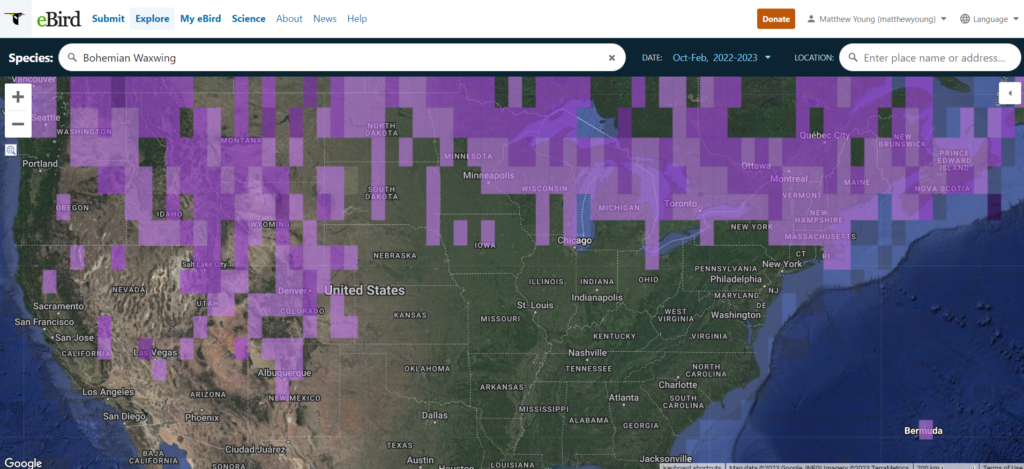
Lesser Goldfinch

While not an irruptive finch per se, The Lesser Goldfinch has been expanding into Seattle, Spokane, Montana and British Columbia over the last 10 years. It even bred in British Columbia in recent years: https://bcbirdalert.blogspot.com/2018/07/rba-lesser-goldfinch-in-osoyoos-july.html?m=1 There are also several areas throughout this northward expansion where Christmas Bird counts have only recently started recording this species. On the fringes, eBird also flags this species as “rare” in a few places where it has now become “regular”. An extreme wandering in November 2022 was Yukon’s 4th record of Lesser Goldfinch. (the prior two reports were both from Whitehorse in 2006 (imm. female)…and then an immature male in 2013). The first was in 1990, mentioned in the 2013 eBird report.
eBird maps for Lesser Goldfinch covering 2010-2023.
For more on irruptions out west and some discussion of a few other non-finch movements taking place this year, see https://www.aba.org/an-overview-of-early-fall-2022-southern-rockies-irruptions-and-a-primer-on-bird-irruptions/
Cover Photo Credit Matt Young
The Finch Research Network (FiRN) is a nonprofit, and has been granted 501c3 status. FiRN is committed to researching and protecting finch species like the Cassia Crossbill, Evening Grosbeak, finches of Hawaii (aka the honeycreepers) and more. The Evening Grosbeak has declined 92% since 1970. We are fundraising around an Evening Grosbeak Road to Recovery project in addition to a student research project, so please think about supporting our efforts and making a small donation at the donate link below.
Donate – FINCH RESEARCH NETWORK (finchnetwork.org)
We can also be found on FB, Instagram and Twitter at https://www.facebook.com/thefinchmasters and also on FB at Finches, Irruptions and Mast Crops.

